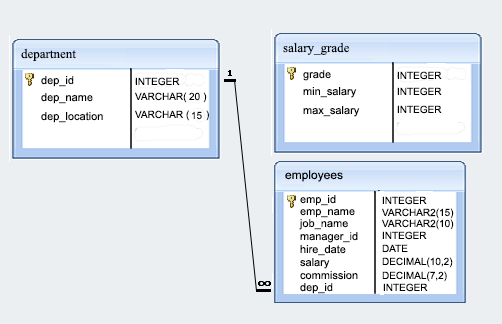SQL Exercise: List the employees who are working as a manager
[An editor is available at the bottom of the page to write and execute the scripts.]
32. From the following table, write a SQL query to find those employees who are working as a manager. Return employee name, job name, department name, and location.
Sample table: employees
Sample table: department
Sample Solution:
SELECT e.emp_name,
e.job_name,
d.dep_name,
d.dep_location
FROM employees e,
department d
WHERE e.dep_id = d.dep_id
AND e.emp_id IN
(SELECT manager_id
FROM employees) ;
Sample Output:
emp_name | job_name | dep_name | dep_location ----------+-----------+-----------+-------------- KAYLING | PRESIDENT | FINANCE | SYDNEY BLAZE | MANAGER | MARKETING | PERTH CLARE | MANAGER | FINANCE | SYDNEY JONAS | MANAGER | AUDIT | MELBOURNE SCARLET | ANALYST | AUDIT | MELBOURNE FRANK | ANALYST | AUDIT | MELBOURNE (6 rows)
Explanation:
The said query in SQL that retrieves the name, job, department, and location for all employees from the employees and department tables who are also managers
The WHERE clause ensures that the department ID in the employees table must match the department ID in the department table and filters the rows to only those where the emp_id is in the list of manager_ids in the employees table.
Go to:
PREV : List the employees not in the MARKETING department.
NEXT : List the highest-paid employees in each department.
Practice Online
Sample Database: employees
Have another way to solve this solution? Contribute your code (and comments) through Disqus.
What is the difficulty level of this exercise?
Test your Programming skills with w3resource's quiz.

